The Louisville basketball defense is historically bad. Breaking down how UofL has gotten here and what can be done to fix the issues next season.
The 2022-23 Louisville basketball season has left many who follow the program apathetic about the final results as we reach a coda.
However, those who are still hoping to see improvement and find the Cards finishing on the upswing to end the year are looking for signs that the Cardinals coaching staff can build a winning program from a macro perspective.
One thing, above all else, is concerning to me and lends to the Cards trending in a terrible direction going forward. And I felt Louisville’s loss at Duke on Monday night was a microcosm of a much deeper-seeded issue.
I tuned in hoping that head coach Kenny Payne would have noticed.
“At times, it looks like the environment intimidated us. Not acceptable,” Payne tried to explain. “We as coaches, me personally, I’ll take the blame for that. I couldn’t get them to play the way they needed to play with the fight that we needed to get a win.”
Is playing in Cameron Indoor in Durham intimidating? Perhaps. But Louisville has been there before. And if a current Cardinal hasn’t played at Duke, they are aware of the hostile environment. And, hell, if they weren’t aware by now, the majority of this roster has played at Kentucky, North Carolina, NC State, Michigan State, Pitt, and several other power five arenas.
As a power program having a few down years, Louisville is undoubtedly getting the best shot from crowds wherever they travel.
For Louisville, I think the real issue is in an area that has been trending in the wrong direction for a while now. And that is its lack of ability to defend.
Over the last decade, Louisville basketball has shown a steady decline in defensive performance.
The downward trend in defensive play has seeped into the culture of the program over the last 2-3 years in such a drastic manner that even greatly improving its offensive output would not lead to or even come close to finishing a season above .500.
While the Cards are starting to gain their footing, scoring 70.5 points per game over the last 6, they’ve also struggled just as much with defensive discipline.
UofL has allowed 79, 73, 61, 93, 91, and 81 points since February 4th.
Going back even further, Louisville allowed 76 to Notre Dame, 75 to Boston College and Pitt, 80 to UNC and Wake, 83 to Clemson, and 86 to a struggling Kentucky team.
Most of these outputs were after the opponent called off the dogs in the final 5-10 minutes of games.
KenPom’s stats peg Louisville basketball as the 286th-ranked team in the country in defensive efficiency.
Simply put, this Louisville defense has been bad and has shown few signs of improvement, even as the offense finally begins to find its footing.
Since the Cardinals won the 2013 national title, the team has steadily gone from allowing 58.8 points per game to an abysmal 75.6 points per game in 2023 — A 16.8-point per-game increase.
However, the last two seasons have seen a sharp increase in points allowed.
Points Allowed Per Game by Season
Kenny Payne Era
2022-23: 75.6 (328th of 363)
Chris Mack Era
2021-22: 70.1 (203rd of 358)
2020-21: 66.5 (64th of 347)
2019-20: 63.7 (33rd of 353)
2018-19: 68.4 (88th of 353)
David Padgett Gap Year
2017-18: 70.4 (123rd of 351)
Rick Pitino Era
2016-17: 66.0 (41st of 351)
2015-15: 61.1 (6th of 351)
2014-15: 59.8 (24th of 351)
2013-14: 61.1 (15th of 351)
2012-13: 58.8 (21st of 347)

A program used to staking its identity on defensive pressure, creating havoc, forcing turnovers, blocking shots, and getting out on the fastbreak has been reduced to a team that is picked apart by competent power five offenses.
But, just how bad has it gotten? And, who is responsible for the downward spiral in defensive efficiency?
Let’s take a deeper dive, using Louisville’s recent loss at Duke as a template.
Lack of fundamentals
Louisville’s issues start with a lack of fundamental discipline on the defensive end.
While improved spacing and continued aggression helped the Cards become more competitive on the offensive end, a lack of basic understanding of defensive principles puts the Cardinals in a woeful position when their opponent has the ball.
Guards are often beaten off the dribble, allowing easy penetration where the Louisville back line does a poor job of cutting off drivers, usually allowing the opponent to gain positioning posted up under the basket.
Players often do not understand their defensive assignments, allowing easy transition opportunities for the opposition- Sometimes teams don’t even have to run any motion to get an easy, open shot.
Duke step-in 3 in transition

In transition, No. 13 Grandison receives the ball from 5, Proctor 30 feet from the basket. 3, El Ellis, and 12, JJ Traynor come up to stop the ball and/ or contest a potential shot.

Nobody covered the passer (5, Proctor) so the ball went directly back to Proctor for a wide-open step-in shot attempt.

1 of 3 things should have happened here. None of them did.
1.) Ellis never should have left 5, Proctor, and allowed Traynor to step up to the ball handler. 2.) Traynor should have recognized Ellis following the ball and stepped up to cover Ellis’ man. 3.) 21, Sydney Curry, who is stationary, gets caught watching and takes a step back. Curry should have slid over to help, allowing 22, Kamari Land to rotate up to Curry’s man.
This is a demonstration of either a lack of basketball IQ or a simple lack of effort.
That feels inexcusable at this point in the season.
Lack of communication on ball screens
Duke worked Louisville to death on Monday night, dishing out 19 assists on 29 made baskets, and putting Louisville into a constant state of confusion.
It was evident that Louisville had no idea if it was switching or staying with defenders on screens, and the lack of communication led to a continuous nightmare scenario on the defensive end.
Let’s dive into the simplicity of what Duke ran all night and how Louisville’s lack of communication or understanding of assignments.
Example 1: Duke made right corner 3


Duke’s 15, Young, comes from the low block and sets a screen on Louisville’s 1, James. Young is trailed by Louisville’s 5, Huntley-Hatfield.

James goes over the screen and Huntley-Hatfield stays with the ball-handler, 5, Proctor. Louisville’s 3, Ellis is also shading towards Proctor, while Louisville’s, 12, Traynor moves up on Young, who is sprinting back to the low block.
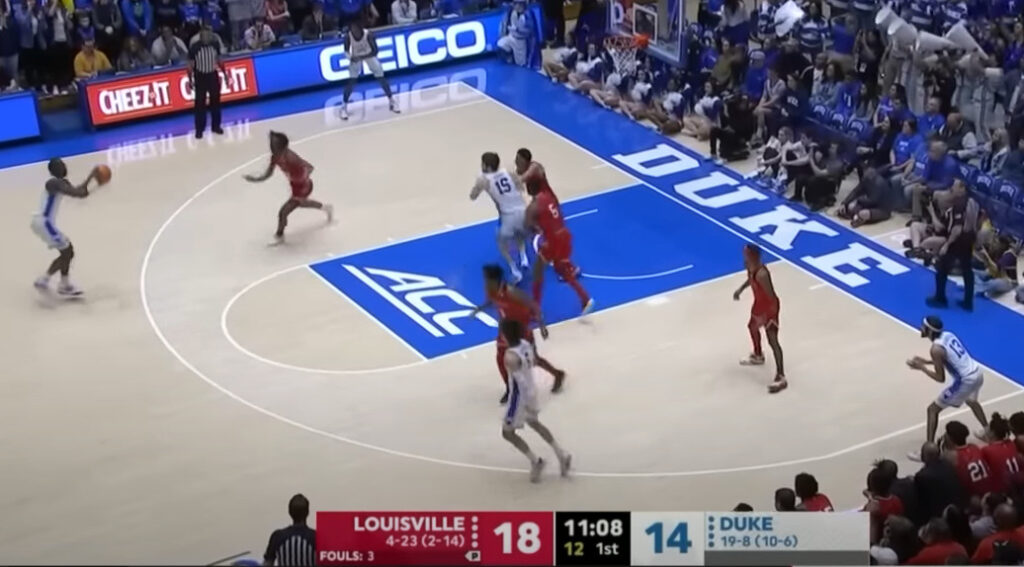
Procter reverses the ball, giving Duke an unbalanced set. Duke’s 0, Whitehead, catches the ball open and in rhythm with Duke’s 25, Mithell as open as a man can get on a basketball court in the corner.

Louisville’s 22, Lands, overruns the closeout, allowing Whitehead to drive the ball and draw three Louisville defenders- Lands, James, and Huntley-Hatfield- while Ellis shades down leaving his man open in the corner.

Now, Whitehead has the ball in rhythm with space forcing Ellis to close out, and leaving 13, Grandison wide open in the corner pocket.
All of this, however, started because Louisville didn’t communicate on the initial ball screen.
Example 2: Duke made left corner 3
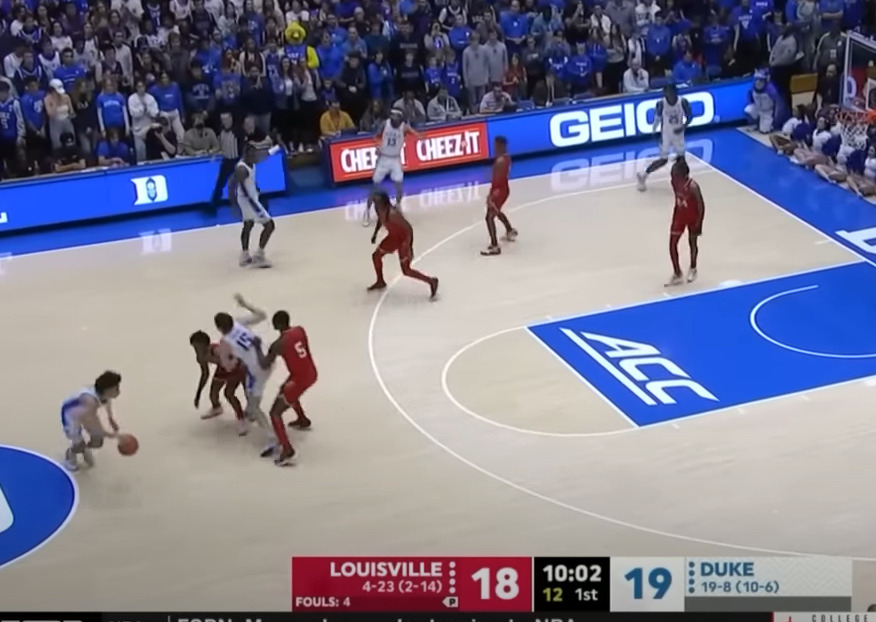
Here’s Duke two possessions later. The Blue Devils have an unbalanced set to the left side of the floor and allow 15, Young to come up from the low block to set a screen.
Huntley-Hatfield wises up this time. He is glued to young on the ball screen, effectively preventing young from rolling toward the basket.
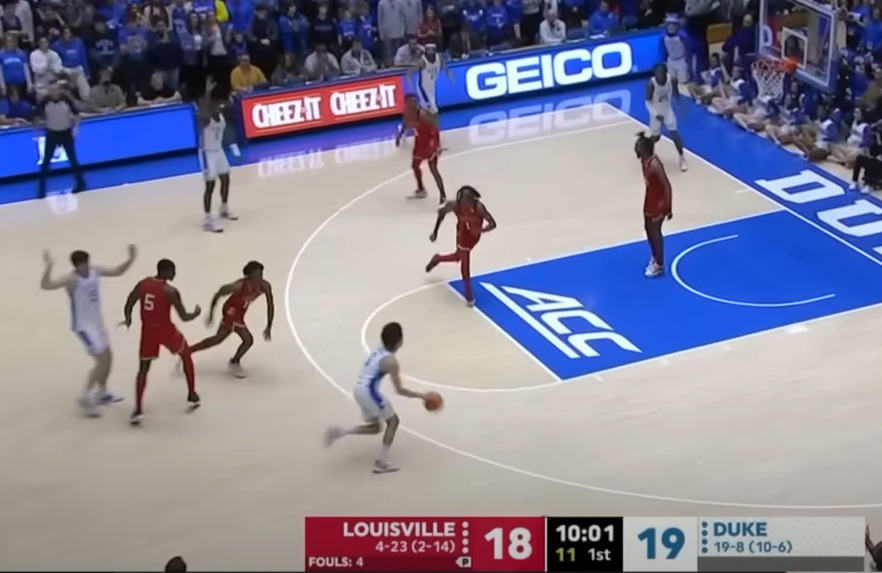
Slight problem, though. Louisville’s 15, Miller, who is guarding 5, Proctor, also stays with Duke’s 15, Young, allowing Proctor a free drive at the basket.
Louisville’s 1, James has to run from the top right side of the three-point line to the left elbow, while 22 Lands steps into the paint to cover. This, of course, frees up two Duke players in the process.

Duke’s 0, Whitehead catches the ball wide-open and swings it to an even more wide-open 13, Grandison- The same player who just made a wide-open corner 3 a minute earlier.
Again, all of this started because Louisville didn’t communicate on a ball screen that started the play.
That is not an issue a team should have 28 games into the season.
Lack of Intensity and Effort
Some of these plays are just inexplicable. Simple defensive hustle plays taken off that lead to easy momentum-shifting baskets for the opposition.
Here, Duke is putting together a nice run, and Louisville basketball desperately needs a stop.
On a missed Ellis layup, Duke quickly gets out on the break.
The players to watch here are 21, Curry, and 3, Ellis.
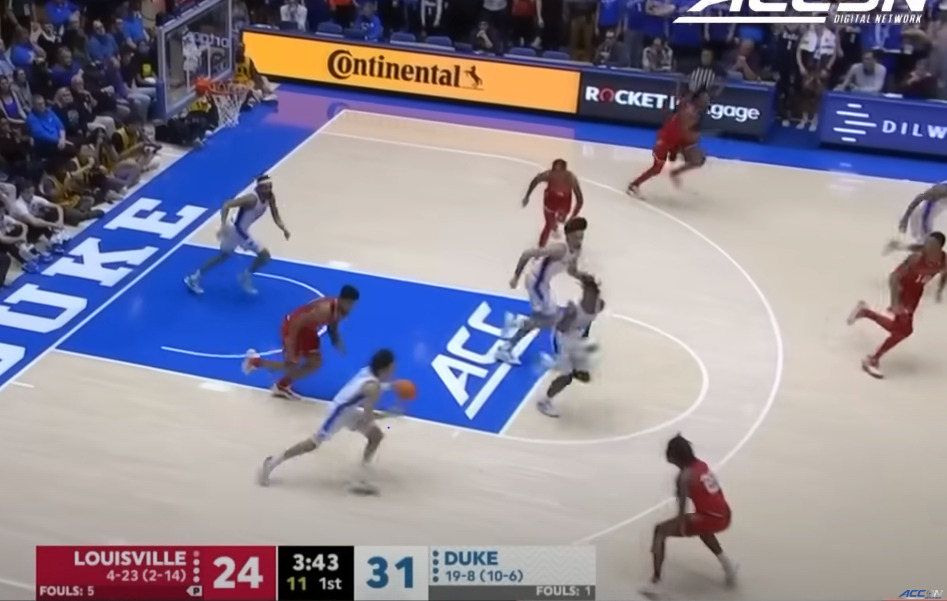

This is as simple as it gets.
Louisville has one player crossing half-court, and Duke has 2.
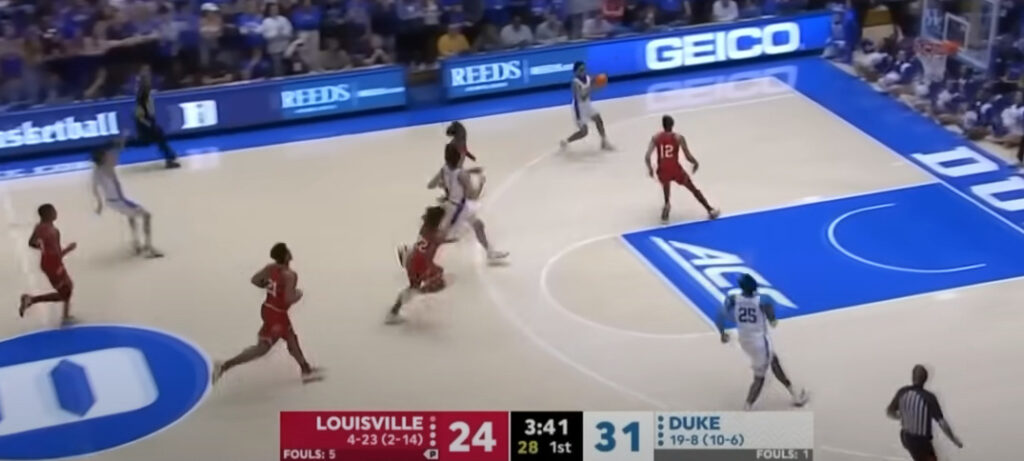
You don’t have to be a basketball savant to see what is about to happen here. Duke is sprinting to the other end, creating a 2-on-1, then 3-on-2 advantage while two Louisville players loaf it back.
Unless this play is perfectly defended by 12, Traynor, and 22, Lands, this is an alley-oop and the two easiest points of the game every time.
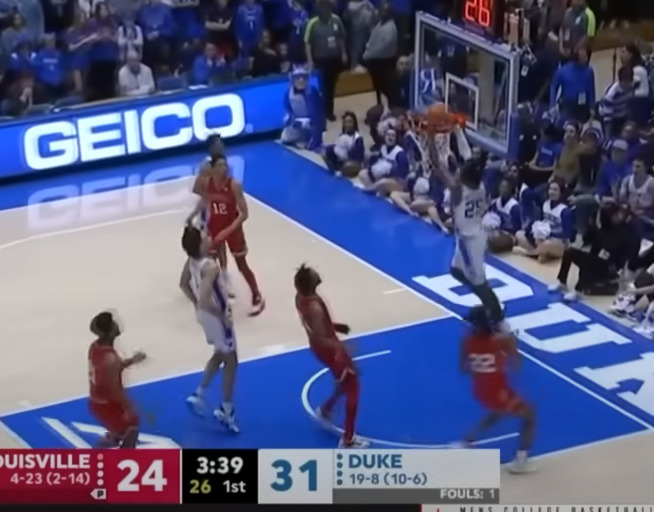
Defensive rebounding deficiencies
Louisville’s lack of defensive discipline is exacerbated by the fact that the Cardinals are abysmal at protecting the defensive glass.
Although Louisville is tied as the 3rd-tallest team in the country, they sit at 220th in the nation in offensive rebounds allowed, giving up 8.6 rebounds per contest.
So, even when Louisville’s opponents are missing shots, they have plenty of second-chance opportunities.
Duke offensive rebound leads to And-1 opportunity
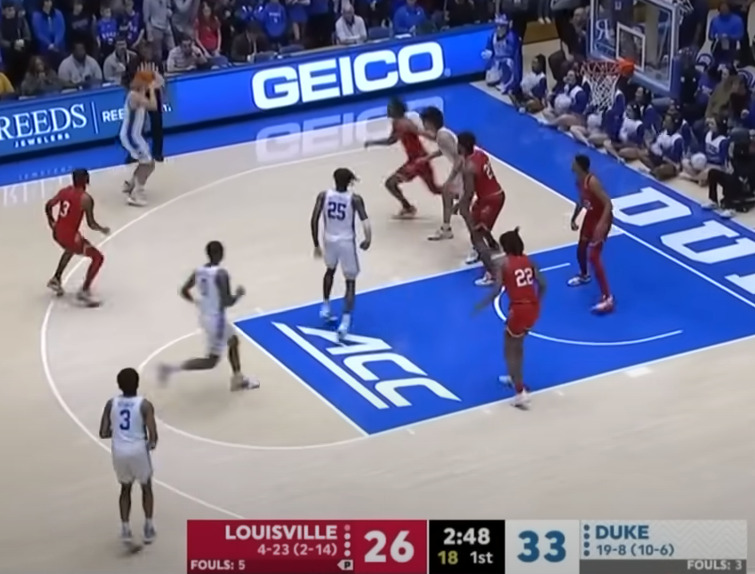
Here, Duke is going to miss an open three point shot. Louisville needs to do its best to take advantage of a lucky break by grabbing a defensive board.
That doesn’t happen.
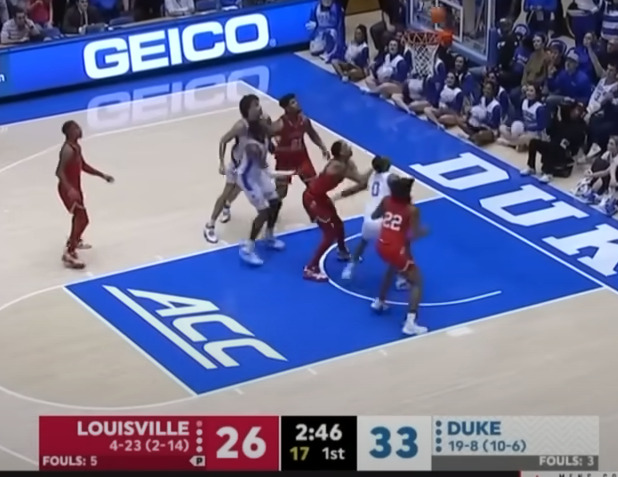
The ball is on the rim, but who is being boxed out?
Lands and Traynor allow 0, Whitehead to slide in front, leaving 25, Mitchell, untouched.
Whitehead tips the ball to Mitchell, who is fouled by Curry.
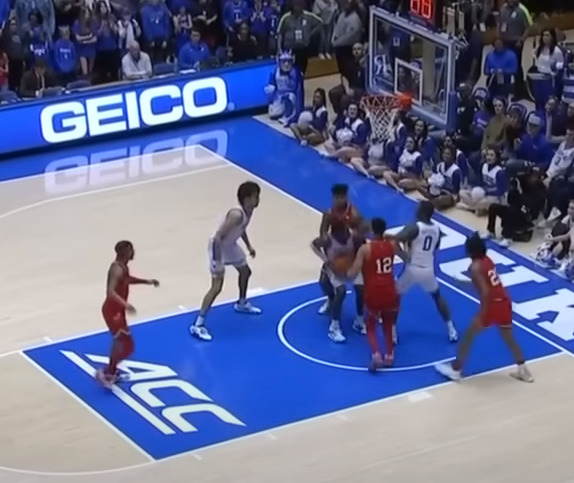
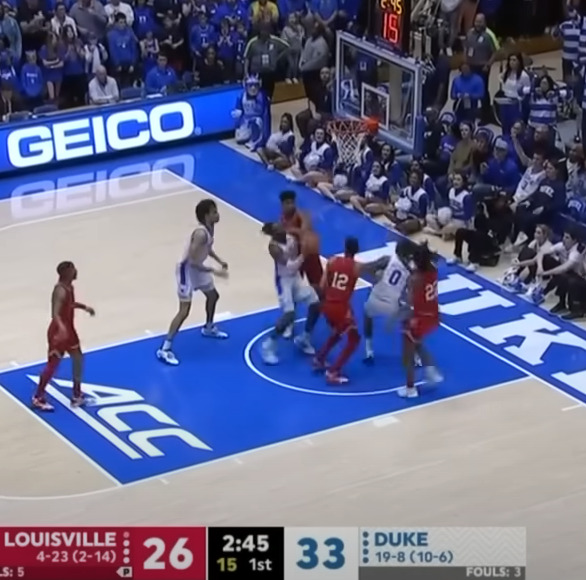
Bad defense leads to a bad box out, which leads to another offensive rebound, which leads to poor defense, which leads to three Duke second-chance points. A forgettable possession all the way around.
Kenny Payne will tell everyone that circumstances surrounding the game impact the team’s ability to win.
The reality is that this Louisville basketball defense has been poor and continues to get worse as the season progresses.
Yes, Louisville has shown spurts of solid defensive play, but those glimpses of hope are too few and way too far between.
This Louisville basketball team is not a juggernaut on the offensive end but has become competent over the last 6 weeks.
It’s the Cardinals’ defense that has continued to cost the team games.
If Louisville wants to improve heading into next season, a high priority needs to be placed on defensive energy and effort. UofL is losing games because of a simple lack of awareness and hustle.
Things must begin to improve quickly, or I fear similar outcomes as we transition to the 2023-24 season.

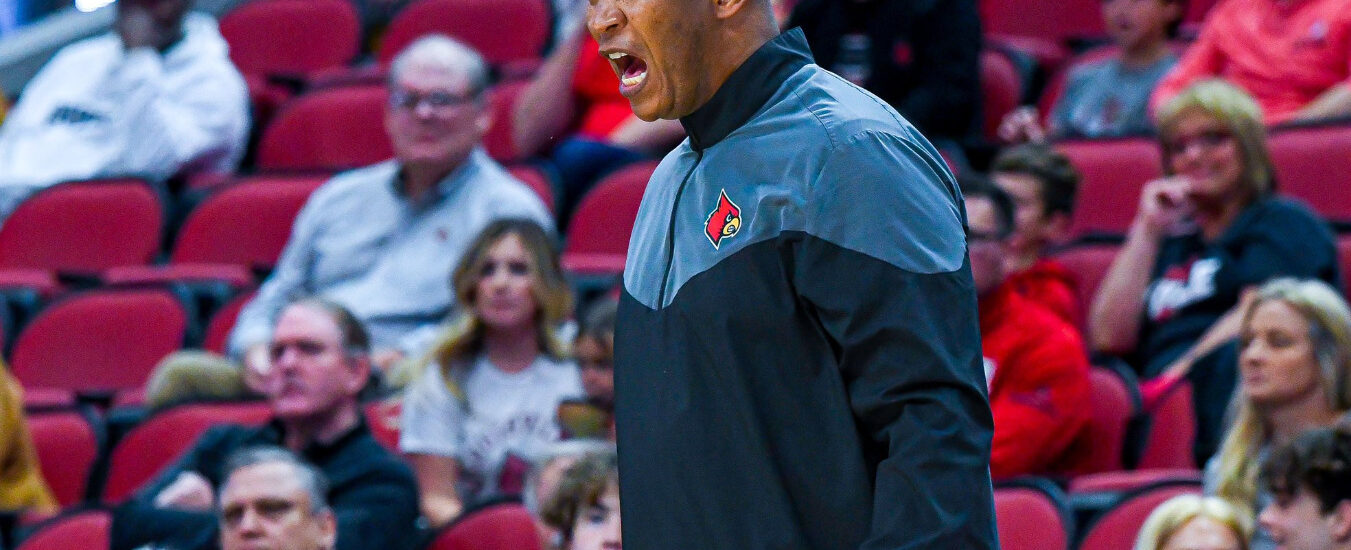
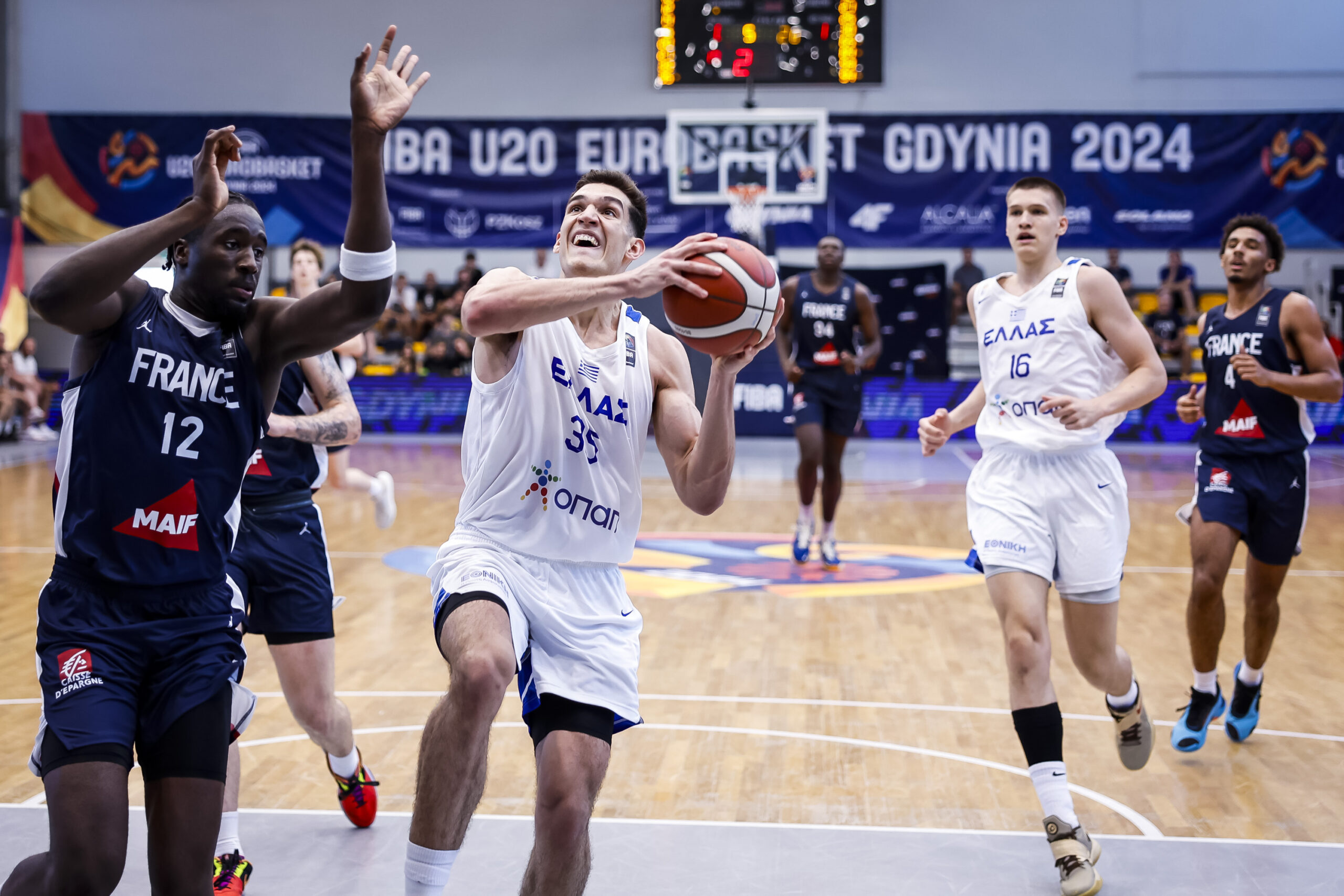
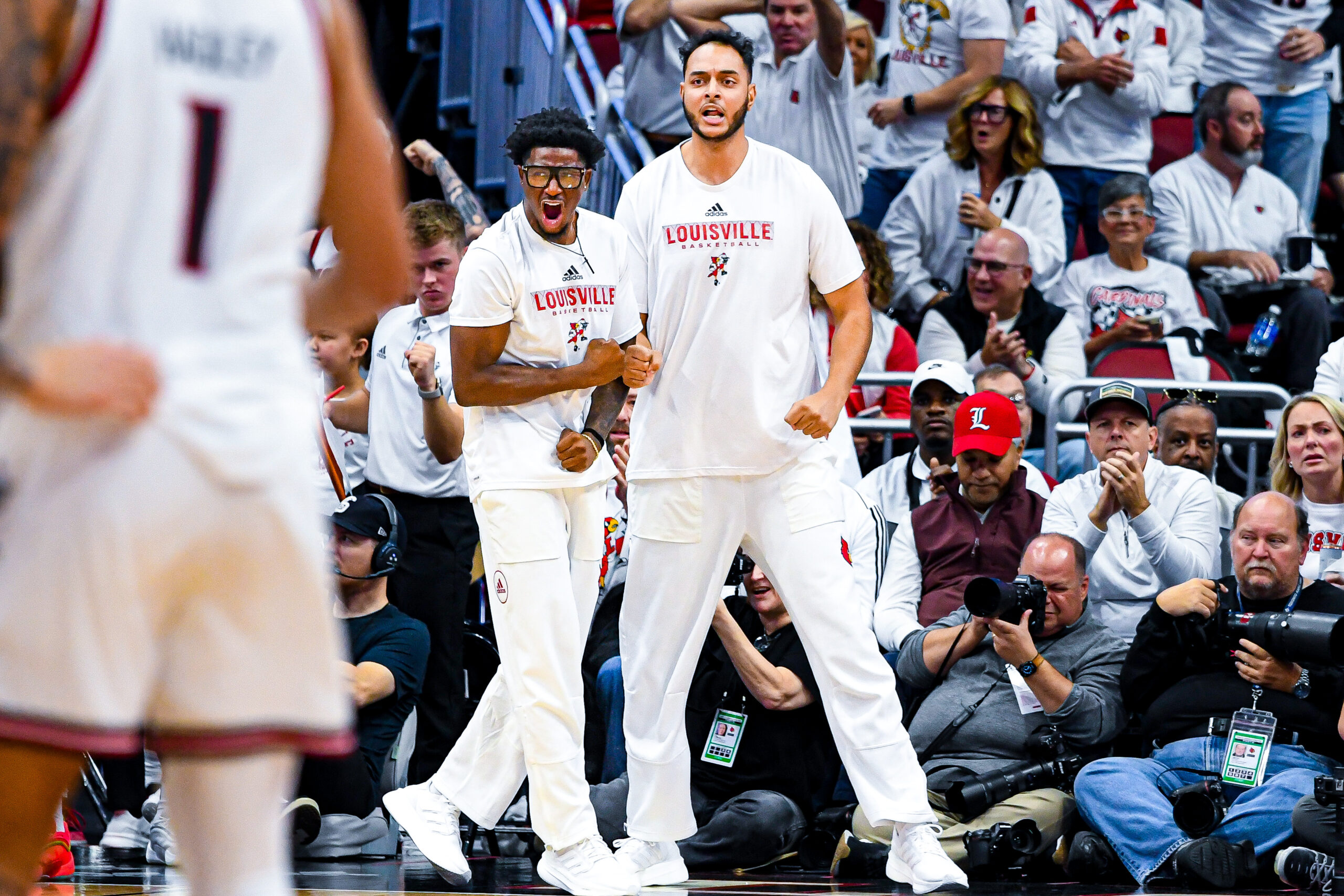
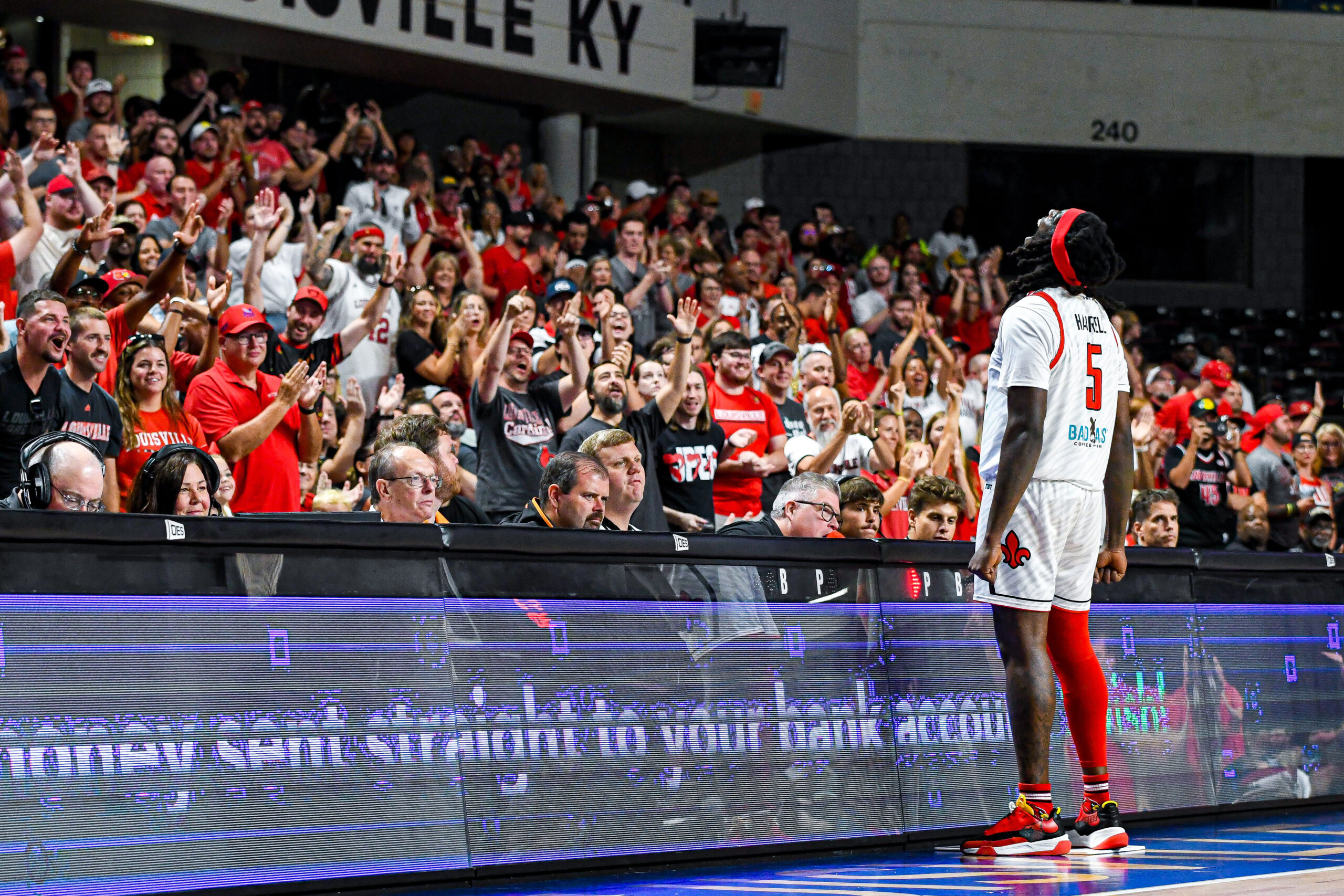

One thought on “Why the Louisville basketball defense is so bad and what can be done to change it”